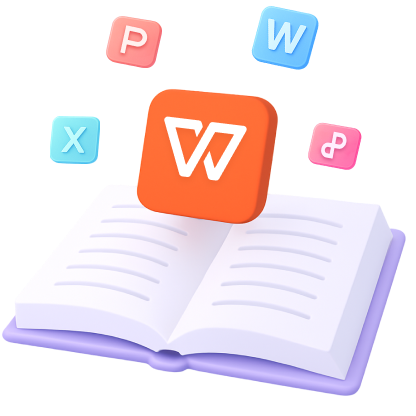Your Essential Guide to Word Format
Proper formatting and layout are crucial for creating readable, professional, and persuasive documents. This guide will walk you through the fundamental principles and advanced techniques of document design, from basic text styling to complex page layouts. Unlock the full potential of your word processor and make every document a masterpiece.
Key Word Layout Types for Every Need
Document Setup & Basics
How to Create a Word Document
A beginner's guide to starting a new document from scratch, covering the essential first steps for any project.
How to Use the Insert Tab in Word
Explore the versatile Insert tab to add tables, pictures, shapes, and other elements to your document.
How to Print Document from Android
Learn the comprehensive steps to print a Word document directly from your Android phone or tablet.
Show Ruler on Android
Enable the ruler in Word for Android to precisely control margins, indents, and tab stops for perfect alignment.
Text & Paragraph Formatting
Create Headings in Word
Use heading styles to structure your document, create a navigable outline, and auto-generate a table of contents.
Change the Default Font
Set your preferred default font in Word to save time and ensure consistency across all new documents you create.
Create a Hanging Indent
Properly format bibliographies and reference lists by creating hanging indents for your citations.
Add Fonts on Android
Customize your documents on the go by learning how to add new fonts to Word on your Android device.
How to Do MLA Format
Follow a complete guide to set up your document in MLA format, including margins, citations, and works cited pages.
Page Layout & Columns
How to Create Columns in Word
Format your text into newsletter-style columns for better readability and a professional layout.
How to Make Two Columns in Word
A quick guide on how to split your text into a simple two-column layout for reports and articles.
How to Make One Page Landscape
Mix portrait and landscape orientations in a single document by isolating a page with section breaks.
Create Sections in Word
Use section breaks to apply different formatting, such as orientation or numbering, to different parts of your document.
Headers, Footers & Page Elements
Create a Header in Word Document
Add consistent information like titles, dates, or page numbers to the top of every page using headers.
Remove Header from Second Page
Learn how to use section breaks to remove or change the header on the second page or subsequent pages.
Insert Page Numbers on Android
Learn how to add and format page numbers in your document using the Word application for Android.
Insert a Footnote
Master the process of adding footnotes for citations, references, or additional comments in your document.
Borders & Watermarks
How to Create a Border in Word
Enhance your page design by adding stylish and effective borders to your entire document or specific sections.
How to Add Border to a Single Page
Apply a page border to just one specific page, such as a title page, without affecting the rest of the document.
How to Remove a Page Border
A quick guide on how to delete single or all page borders from your Word document for a cleaner look.
Add Watermark on Android
Protect or brand your documents by adding a custom text or image watermark in Word on an Android device.
Remove a Draft Watermark
Easily remove 'DRAFT' or other text watermarks from your document using two simple and effective methods.
Objects & Advanced Fields
Create a Graph in Word
Visualize your data effectively by creating and customizing graphs and charts directly within your Word document.
Add Fillable Fields in Word
Design interactive forms by adding fillable text fields, checkboxes, and dropdown lists to your documents.
Remove an Anchor in Word
Understand what object anchors are and how to remove them for better control over image and object placement.
Create a Letterhead in Word
Learn to design professional letterheads using headers and footers to maintain brand consistency.
Insert a Placeholder in Word
Learn to use placeholders for text or images, making it easy to build document templates for future use.
Navigation & Document Management
Create an Outline in Word
Structure your document logically by using Word's outline view to organize headings and subheadings.
Update All Fields in Word
Save time by learning the shortcut to update all fields, like the table of contents or cross-references, at once.
Turn Off Editing in Word
Protect your document from accidental changes by making it read-only or restricting editing permissions.
Add Table of Contents on Android
Automatically generate a navigable table of contents in Word on your Android device for long documents.
Count and Control Words Per Page
Get tips on how to manage your document's length by monitoring and adjusting the word count per page.
Best Practices for Word Layout
Following a few key principles can dramatically improve the quality and readability of your documents. Here are some best practices to keep in mind.
-
Consistent Styling: Use the 'Styles' feature to apply consistent formatting for headings, subheadings, and body text. This not only saves time but also makes your document look more professional and allows for easy creation of a table of contents.
-
Readability is Key: Choose a clean, legible font (like Arial, Calibri, or Times New Roman) in a reasonable size (10-12pt for body text). Ensure sufficient contrast between text color and background.
-
Use White Space Effectively: Don't crowd your page. Use appropriate margins, line spacing (1.15 or 1.5 is common), and paragraph spacing to improve readability and give your document a clean, uncluttered look.
-
Align with Purpose: Use left alignment for body text as it's easiest to read. Use center alignment for titles, and justified alignment with caution, as it can create awkward spacing between words.
Word Format & Layout FAQs
What is the fastest way to format a long document?
The fastest and most effective way is to use Styles. Instead of manually formatting each heading and paragraph, apply predefined styles (e.g., 'Heading 1', 'Normal'). This ensures consistency and allows you to change the entire document's look by simply modifying the style definition.
How can I stop a new section from starting on the same page as the previous one?
You should insert a 'Page Break' or a 'Section Break (Next Page)'. Go to the 'Layout' or 'Insert' tab, find 'Breaks', and choose the appropriate option. This forces the subsequent content to start on a new page, giving you full control over your document's structure.
Why does my text formatting look different when I paste it from another source?
Copied text often carries its original formatting. When you paste, look for 'Paste Options' and choose 'Merge Formatting' or 'Keep Text Only'. This will strip the old formatting and apply the default style of your current document, ensuring a consistent appearance.
Create Perfectly Formatted Documents Today
Ready to apply these techniques? Download WPS Office for free and get access to WPS Writer, a powerful tool with all the formatting and layout features you need to create stunning, professional documents on any device.
Free DownloadOther Helpful Collections for You
Word Review Made Simple
Understand word review functions for secure editing and collaboration. Learn the essentials of track changes in word to manage revisions and maintain document quality.
Troubleshooting Errors in Word
Learn how to fix Word errors like read-only documents, export failures, and more. Follow our clear, easy-to-follow guides to resolve common Word errors and improve your workflow.
Word Conversion Tips
Learn how to easily convert Word documents to various formats and vice versa.From word documents to PDF, Excel, images and more, discover simple methods to streamline your work.

